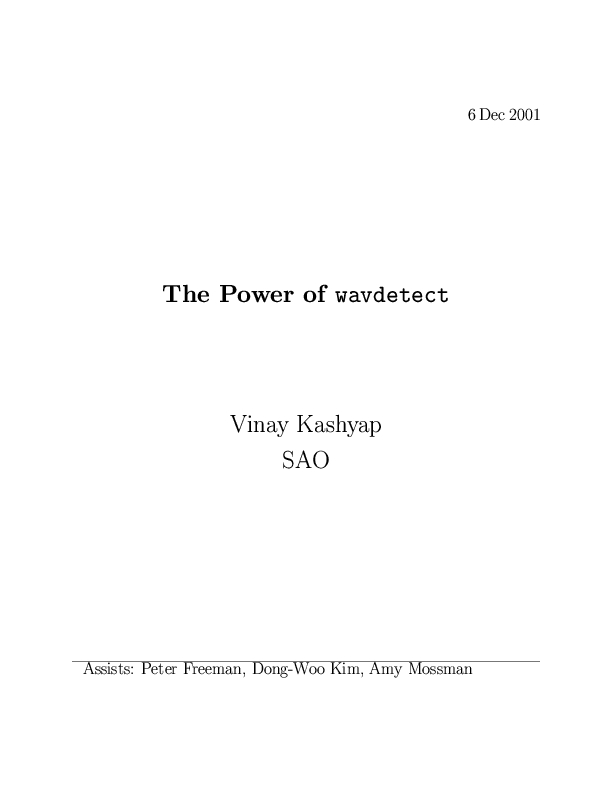The power of wavdetect
wavdetect is a wavelet-based source detection algorithm that is in wide use in X-ray data analysis, in particular to find sources in Chandra images. It came out of the Chicago “Beta Site” of the AXAF Science Center (what CXC used to be called before launch). Despite the fancy name, and the complicated mathematics and the devilish details, it is really not much more than a generalization of earlier local cell detect, where a local background is estimated around a putative source and the question is asked, is whatever signal that is being seen in this pixel significantly higher than expected? However, unlike previous methods that used a flux measurement as the criterion for detection (e.g., using signal-to-noise ratios as proxy for significance threshold), it tests the hypothesis that the observed signal can be obtained as a fluctuation from the background.
Because wavdetect is an extremely complex algorithm, it is not possible to determine its power easily, and large numbers of simulations must be done. In December 2001 (has it been that long?!), the ChaMP folks held a mini workshop, and I reported on my investigations into the efficiency of wavdetect, calculating the probability of detecting a source in various circumstances. I had been meaning to get it published, but this is not really publishable by itself, and furthermore, wavdetect has evolved sufficiently since then that the actual numbers are obsolete. So here, strictly for entertainment, are the slides from that long ago talk. As Xiao-li puts it, “nothing will go waste!”

hlee:
Looks like a lot can be done in future.
10-24-2007, 1:53 pm